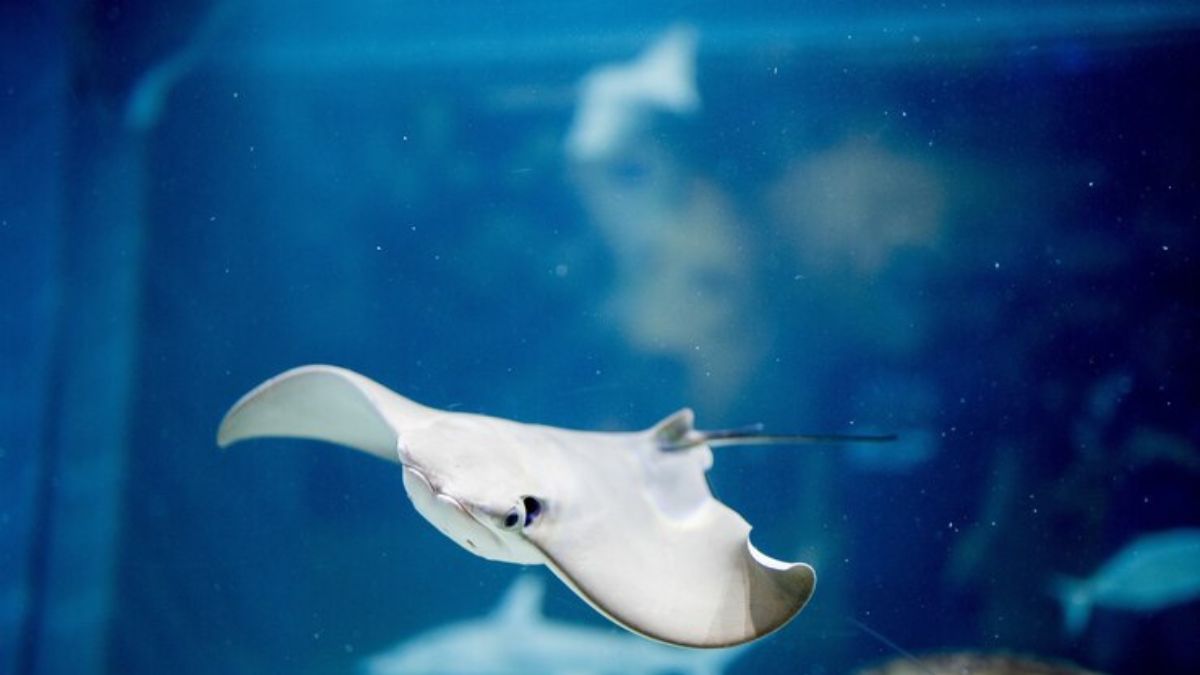Manta rays are one of the most captivating creatures that inhabit the ocean. Known for their graceful movements and large, wing-like fins, these magnificent animals have been a subject of fascination for marine enthusiasts and researchers alike. Often compared to underwater birds, manta rays have a unique appearance, with their wide, triangular bodies and large cephalic lobes that help them funnel food into their mouths.
In this article, we will delve deeper into the fascinating world of manta rays, focusing on their behavior, habitat, conservation, and the efforts being made to protect them. Whether you’re an ocean lover or someone curious about marine life, you’ll find the information in this guide intriguing.
What Are Manta Rays?
Manta rays, belonging to the genus Manta, are part of the family Mobulidae, which includes both the manta rays and the smaller devil rays. These rays are known for their distinctive body shape and are the largest species of ray, with some individuals reaching widths of up to 29 feet (8.8 meters). Despite their size, manta rays are gentle giants, feeding mainly on plankton and small fish. Their large, triangular pectoral fins are often compared to wings, allowing them to glide effortlessly through the water.
Manta rays can be classified into two main species: the reef manta ray (Manta alfredi) and the oceanic manta ray (Manta birostris). The reef manta ray is typically found in coastal areas, while the oceanic manta ray inhabits deeper waters in the open ocean.
Habitat and Distribution of Manta Rays
Manta rays can be found in tropical, subtropical, and temperate waters around the world. These majestic creatures are usually associated with coral reefs, but they can also be found in open oceanic waters. Manta rays are highly migratory, and their movement patterns are often influenced by the availability of food and environmental conditions.
The distribution of manta rays is vast, with populations found in locations such as the Indo-Pacific region, the coasts of Australia, the Maldives, and parts of the Pacific Ocean. They are also found in the Caribbean Sea, the Gulf of California, and along the coasts of Africa and the Americas.
One of the most famous places to observe manta rays is at cleaning stations, which are locations where small fish, such as cleaner wrasses, remove parasites and dead skin from the manta rays. These cleaning stations are vital to the manta rays’ health and well-being.
Manta Ray Behavior and Social Life
Manta rays are known for their curious and social nature. Unlike other rays that prefer to live solitary lives, manta rays often form groups, especially during feeding or migration. These groups, however, are not permanent; they tend to disband after the purpose for gathering is fulfilled.
The feeding behavior of manta rays is especially unique. They often feed on plankton, small fish, and even krill by swimming with their mouths wide open, filtering large quantities of water through their gills. This method of filter feeding is what distinguishes them from other rays, which typically use their mouths to suck in food from the ocean floor.
One of the most impressive aspects of manta ray behavior is their acrobatic displays. They are known to breach the water’s surface and flip, spinning in the air before re-entering the water. While the exact reason for these aerial displays is still not fully understood, it is believed to be related to mating rituals or communication.
Manta Rays and Reproduction
Manta ray reproduction is a fascinating process. These animals are ovoviviparous, meaning they give birth to live young, but the embryos develop from eggs inside the mother’s body. Manta rays typically have a long gestation period, ranging from 12 to 13 months. After this period, a single pup is born, and the mother will care for it until it is ready to fend for itself.
Interestingly, female manta rays tend to be larger than males, and mating rituals often involve elaborate courtship displays. Males engage in behaviors such as chasing females and performing acrobatic flips and spins to attract their attention. Mating generally occurs in specific regions where manta rays gather, such as cleaning stations or areas with abundant food sources.
The Importance of Manta Rays in Marine Ecosystems
Manta rays play a significant role in marine ecosystems. As filter feeders, they help maintain the balance of plankton populations, preventing any single species from dominating the ecosystem. This helps maintain biodiversity and ensures that the marine food chain remains intact.
Furthermore, manta rays are important indicators of ocean health. Their presence in an area can signify a healthy and thriving ecosystem, while their absence may suggest environmental degradation or overfishing. By studying manta rays and their migration patterns, researchers can gain valuable insights into the state of marine environments.
Manta Ray Conservation Efforts
Over the years, the population of manta rays has been steadily declining due to various factors, such as overfishing, habitat destruction, and the illegal trade of manta ray gill plates for use in traditional medicine and as souvenirs. The International Union for Conservation of Nature (IUCN) has listed both species of manta rays as vulnerable, urging for global conservation efforts.
Many organizations and governments around the world have initiated conservation programs to protect manta rays and their habitats. These efforts include establishing marine protected areas (MPAs), promoting sustainable fishing practices, and creating awareness about the importance of manta rays in marine ecosystems.
One successful conservation initiative is the creation of manta ray sanctuaries, such as those in the Maldives and Fiji, where fishing and the collection of manta rays are strictly prohibited. These protected areas allow manta rays to thrive without the threat of human interference.
In addition to legal protections, researchers are also working to better understand manta ray behavior and migration patterns. By tracking manta rays with satellite tags, scientists can gather valuable data on their movements and use this information to inform conservation strategies.
Threats to Manta Rays
Despite efforts to protect manta rays, they still face numerous threats. One of the most significant dangers is the illegal trade of their gill plates, which are highly prized in traditional Chinese medicine. This trade has led to the deaths of thousands of manta rays each year, further contributing to the decline in their populations.
Another threat to manta rays is habitat destruction. Coral reefs, which serve as important feeding and breeding grounds for many marine species, including manta rays, are increasingly threatened by human activities such as coastal development, pollution, and climate change. Rising ocean temperatures and ocean acidification also pose serious risks to manta ray populations, as these environmental changes can disrupt the availability of food and affect the health of coral reefs.
Additionally, the increased frequency of large-scale fishing operations, including industrial-scale tuna and shark fisheries, poses a direct risk to manta rays. Bycatch, or the accidental capture of manta rays in fishing nets, is a significant concern and often results in injury or death for these creatures.
How You Can Help Protect Manta Rays
There are several ways individuals can contribute to the conservation of manta rays. One of the simplest ways is by supporting organizations that are dedicated to marine conservation and manta ray protection. Donating to these organizations or participating in fundraising activities can provide much-needed resources for research and advocacy efforts.
Additionally, individuals can reduce their carbon footprint by adopting environmentally friendly practices, such as minimizing plastic waste, conserving energy, and supporting sustainable seafood initiatives. Reducing pollution and mitigating climate change are essential for maintaining healthy oceans and protecting the creatures that call them home, including manta rays.
Supporting eco-tourism initiatives that prioritize sustainable interactions with marine life is also another way to contribute to manta ray conservation. When participating in activities like snorkeling or diving with manta rays, it’s important to choose operators that follow responsible tourism practices and prioritize the well-being of the animals.
Conclusion
Manta rays are among the most majestic creatures in the ocean, and their role in maintaining healthy marine ecosystems is invaluable. Despite the challenges they face, concerted conservation efforts are making a difference in their protection. As we continue to study and understand these remarkable creatures, it is our responsibility to ensure that future generations can also experience the awe and wonder of encountering manta rays in the wild.
ALSO READ:Window Voyeurism: Understanding the Risks and Implications
FAQs
Are manta rays dangerous to humans?
No, manta rays are not dangerous to humans. They are gentle creatures and pose no threat to people. They feed on plankton and small fish, not humans.
How long do manta rays live?
Manta rays can live up to 50 years in the wild, although their lifespan varies depending on the species and environmental conditions.
Can manta rays be found in all oceans?
Manta rays are found in tropical, subtropical, and temperate waters around the world, particularly in the Indo-Pacific region, the Caribbean, and along the coasts of Africa and the Americas.
Why are manta rays endangered?
Manta rays are endangered due to overfishing, habitat destruction, and the illegal trade of their gill plates. These threats have significantly impacted their populations.
How can I get involved in manta ray conservation?
You can support manta ray conservation by donating to marine organizations, participating in eco-tourism activities, and promoting sustainable practices to protect marine ecosystems.







